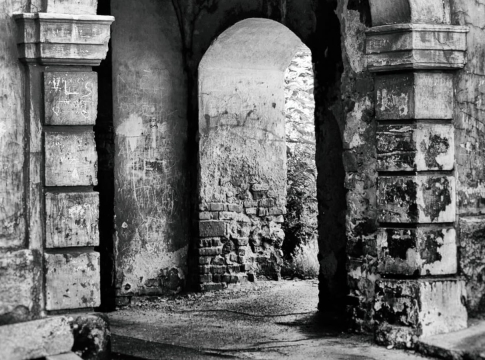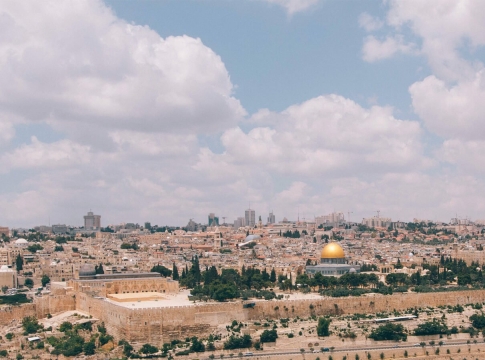
The Israelites were forced to camp in the desert for over forty years before they were eventually able to enter their new land after God delivered them from Egyptian slavery (see the book of Exodus). During this period, God offered the Israelites several religious and socioeconomic guidelines in addition to imparting extensive knowledge about Himself. God gave them specific instructions to construct the tabernacle, a dwelling place for Him, among other things.
We have a good idea of what it looked like because the Bible contains many of these features. Take this impression as an example.
The building of this shrine is rich in symbolic meaning. Let’s examine a few of the things it has to teach us about God and our connection to Him.
God wants a relationship
God is all-pervasive and holy. Nevertheless, He desires to live among people: according to Exodus 29:45, “I will dwell among the people of Israel and will be their God.” The Lord’s demand to the Israelites to construct Him an earthly dwelling place is an expression of His desire to have a relationship with humans.
The sanctuary ought to be transportable, as they were always on the move throughout that period. The Israelites carried it everywhere they went in a sort of tent. The tabernacle was positioned in the center of the camp each time they set up their tents. God was thus constantly present and observable. The Israelites planned to construct a permanent temple after they had arrived in Canaan.
God is holy
The Tabernacle consisted of multiple structures. It was made up of a fence-enclosed courtyard space outside. This patio contained a tent dubbed “holy place.” It was only open to priests entering to carry out their ritualistic responsibilities.
There was a distinct location within this “holy place” known as the “holy of holies.” A wooden chest “covered on all sides with gold, in which was a golden urn holding the manna, and Aaron’s staff that budded, and the tablets of the covenant” stood here as the ark of the covenant (Hebrews 9:4). The “mercy seat” was a golden lid on the ark. “There I will meet with you, and from above the mercy seat, from between the two cherubim that are on the ark of the testimony, I will speak with you about all that I will give you in commandment for the people of Israel,” God said to Moses (Exodus 25:22), indicating that this was the location where God existed.
Once a year, on the Day of Atonement, only the high priest was permitted to enter the “holy of holies.” A unique curtain divided it off, signifying that people’s sins prevent them from entering God’s presence because they are incompatible with God’s holiness. Therefore, it was made evident that humanity cannot get to God in their current state, even though the tabernacle represented God’s residence among the people and demonstrated His desire for a connection with us humans.
People need atonement
An altar for burnt offerings was situated in the courtyard outside. Food and animal sacrifices were made to God on this altar. We won’t go into great depth about the many guidelines about the precise methods of offering different sorts of sacrifices here. However, the truth that mankind are immoral and deserving of death was painfully made evident by the animal sacrifices. The only way to escape the wrath of the Lord is for someone else to pass away in their stead.
Every day, the tabernacle served as a symbol of the need for atonement: if someone had sinned, they were to bring an animal to the priests, who would then kill and burn the animal on the altar. It will be burned by the priest atop the food offerings made to the Lord on the altar. And the sin that he has committed will be atoned for by the priest, and he will get forgiveness (Leviticus 4:35).
In order to preserve and mend the relationship between a holy God and his sinful people, animal sacrifices were required. They were by no means a conclusive answer, though. Forgiveness could only come from the atoning death of Jesus Christ centuries after the animal sacrifices. “Christ entered the holy places once and for all through the greater and more perfect tent (not made with hands, that is, not of this creation), not by the blood of goats and calves but by His own blood, securing an eternal redemption,” according to Hebrews 9:11–12. This was after Christ appeared as a high priest of the good things that have come.
Jesus has fulfilled the symbolism of the tabernacle
According to Hebrews 8:5, the tabernacle, along with its rites and laws, served as “a copy and shadow of the heavenly things.” All of this has now been accomplished by Jesus, thus the tabernacle (or temple) and its sacrifices are no longer required. “There is no longer any offering for sin where these [sins and lawless deeds] are forgiven” (Hebrews 10:18).
There is now a “new and living way” to God thanks to Jesus. We can “draw near with a true heart in full assurance of faith, with our bodies washed with pure water and our hearts sprinkled clean from an evil conscience” (Hebrews 10:22) if we trust in Jesus to forgive our sins. [We are no longer in need of a tabernacle]. We are “being built up as a spiritual house, like living stones, to be a holy priesthood, to offer spiritual sacrifices acceptable to God through Jesus Christ” (1 Peter 2:5) as believers.





